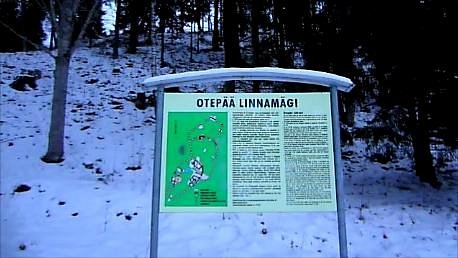Things to do in Otepaa, Valga County: The Best Sights & Landmarks
Otepää (formerly Nuustaku) is a town in Valga County, southern Estonia, it is the administrative centre of Otepää Parish. Otepää is a popular skiing resort, popularly known as the "winter capital" of Estonia (in contrast to the "summer capital" Pärnu). During the 2005–2006 season it became the site for FIS Cross-Country World Cup events.
Restaurants in Otepaa
1. Otepaa Maarja Lutheran Church
Overall Ratings
4.5 based on 11 reviews
Otepaa Maarja Lutheran Church is historically connected to the national flag of Estonia. The blue, black and white flag of the Estonian Student Union, which later became the national flag and in 1991 the official flag of the state of Estonia, was consecrated in the rectory of the church on 4 June 1884. Pay attention to the bar reliefs commemorating the event next to the entrance of the church and the interior with its English-style neo-gothic décor. Maaraj Church was given its current appearance in the middle of the 19th century. The doors of the church are open to everyone in summer. Services are held at 11 am on Sundays.
2. Otepaa Fort
Overall Ratings
4.5 based on 2 reviews
Come and walk to the top of the Otepaa Fort that is about thirteen thousand years old. The hill has two levels, has an oval shape when viewed from the top and lies more or less in the north-to-south direction. Its absolute height is 165.6 m above sea level. You will see the ruins of the stone stronghold established by Bishop Herman in 1224 on the top of the fort.Interesting facts:* the hill gave Otepaa its name, because it looked like the head of a bear when seen from the side (‘ott’ is the old Estonian word for ‘bear’ and ‘paa’ is the old Estonian word for ‘head’);* one of the strongest strongholds of Ancient Estonia stood on the fort;* the oldest known firearm in the world was found on the fort.
3. Monument to Soldiers Killed in the War of Independence
Overall Ratings
4.0 based on 2 reviews
The monument to soldiers who fell in the War of Independence stands on a hill in front of Otepaa Maarja Church and it is remarkable because it was hidden underground for 30 years. The monument was reopened in 1989 after renovation. The top part of the monument bears the words HONOUR THE FALLEN and a list of 22 names. The granite piece with the full list has been lost. The metal decorations were created at the initiative of sculptor Juri Ojaver.Interesting facts:The initial monument was designed by Voldemar Melnik and made by stonemason Peeter Veeber. The monument was opened for the first time on 10 June 1928.
4. Otepaa Energy Column
Overall Ratings
3.5 based on 12 reviews
Otepaa irradiates good energy! The monument that celebrates the existence of positive energy fields was opened in Mae Street on 1 October 1992.The entire field is surrounded by benches and the location of these as well as the column itself was selected by psychics.The energy column is the symbol which reminds us that in this rapidly changing world, humans are a part of nature and everything is based on the rules of nature that rely on balance and co-dependency.
5. 12th Century Ruins of the Otepaa Bishop's Castle
Overall Ratings
3.0 based on 1 reviews
You can see the ruins of the first known brick building in Estonia on top of the Otepaa Fort. Herman I, who became the Bishop of Tartu in autumn 1224, established the first stronghold of its diocese here. A settlement, which was mainly populated by craftsmen and merchants, appeared around the bishop’s castle in the 13th century.Interesting facts:* the oldest traces of a settlement on the Fort date back to approximately the change of the system of chronology; in the 11th century, Otepaa was the most important stronghold of the ancient Ugandi County;* a metal map of the stronghold was installed on the Fort in 1937;* there are plans to establish ancient-style buildings on the foot of the Otepaa Fort as part of the Otepaa History Park project.




